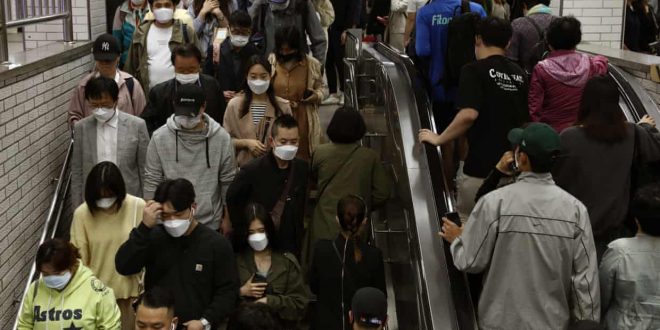A sudden rise in infections leads to the temporary closure of nightclubs in Seoul. Lebanon tightens the curfew it had earlier relaxed after cases rebound over the weekend. German leaders wonder if they are easing too fast, as the country’s parks fill up and its infection rate appears to accelerate.
Welcome to the next phase of the coronavirus pandemic. Curves are being flattened in many countries. The harsh lockdowns of the past few months, implemented to prevent healthcare systems from melting down, are gradually being rolled back. The economic and social toll of mass isolation is growing every day.
More lenient regimes, including in France, the UK and Spain, have been greeted with relief. But the basic problem is still with us. An infectious virus is loose in our communities. The more we mix, the more it will spread.
Scientists are not surprised by the bumps in cases in China, Iran and other places that have relaxed their lockdowns in past weeks. “It’s worrying, but it is to be expected,” said Ian Jones, a professor of virology at the University of Reading. “It’s an inevitable consequence of re-allowing social mixing.”
“It’s part of the trade off,” said Ian Mackay, a virologist at the University of Queensland. “There will be lots of people who are asymptomatic cases or mildly ill people that we don’t detect. So if people come together again, we’re going to see these things happen.”
Without a vaccine, epidemiologists predict the virus will smoulder for the next few months and possibly years, breaking out as spot-fires around gatherings – such as a French funeral being blamed for a new outbreak, or in meat-packing plants in Germany and the US where cases surged last week. Restrictions on our lives are likely to be eased and tightened as new infections ebb and flow.
“The new phase will be living with Covid,” said Jones. “I don’t think the idea that you’re going to get complete clearance [of the virus] is realistic. It’s going to be there at a level, and the question is at what level. What community transfer rates are acceptable to society? And what mitigation strategies can you put in place to make these rates as low as possible?”
Among those strategies, he says, will need to be widespread and regular testing, the adoption of equipment such as masks as a standard accessory for leaving the home, and “as much social distancing as one can practically do”.
These might be the first weeks of the world’s largest ever public health trial. “We are all watching and learning from each other’s progress,” Mackay said. “There’s really a playbook being written in every country that we’re learning from. It’s one giant experiment, made up of lots of little experiments in every country, in every jurisdiction.”
Over time, the list of safer activities is likely to grow. Ideally, societies will get better at managing the risk of things that are unsafe but deemed necessary.
The past weekend has already given some clues: nightclubs, for example, where people are in close proximity and their inhibitions are lowered by alcohol, seem like an obvious site for mass transmission of disease. Time may prove otherwise. Some societies may decide the risk is worth it.
Countries that have managed to squash their curve, such as Australia and New Zealand, will potentially provide the most controlled environments and therefore the richest testing grounds, Mackay said.
“In Australia, for example, we are going to see if the people going to the shops this weekend will lead to a rise in cases, and that will inform the entire world.”
Some of the difficulties ahead are already coming into focus. In the UK, there is widespread confusion over what exactly has been allowed. Germany, which was spared the worst ravages of the virus, is struggling with how to convince its citizens to adhere to the ongoing restrictions.
“It’s not over until it’s over,” the president of South Korea, Moon Jae-in, reminded his country over the weekend, after announcing the new burst in cases.
In countries without a social safety net, the imperative to restart economic life will only grow more intense, and may pressure governments to eventually ditch the experiment altogether.
The beginning of the climb out of this pandemic has started in many places, but is likely to be long. “It continues indefinitely until the rate of transfer is so small that the virus will naturally extinguish, or until it can be pushed down by a vaccine,” Jones said.
The Guardian
 Lebanese Ministry of Information
Lebanese Ministry of Information



